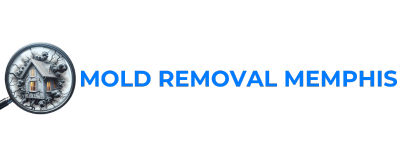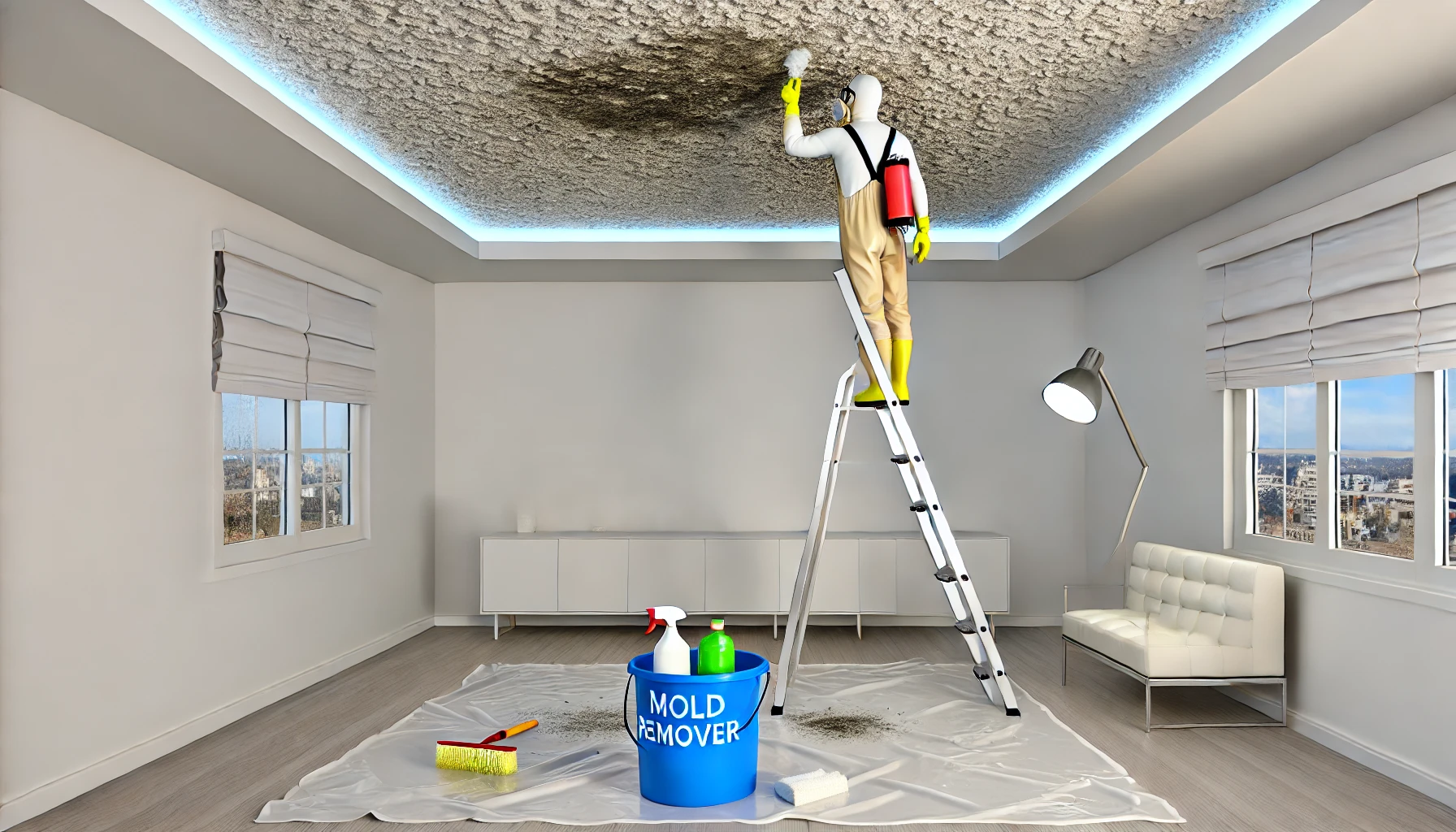How To Remove Mold From Popcorn (textured) Ceiling?
TL;DR: To remove mold from a popcorn or textured ceiling, first identify and fix the moisture source, such as leaks or humidity issues. Contain the area to prevent mold spores from spreading. Use specialized mold-killing products like RMR-86 Instant Mold and Mildew Stain Remover Spray or Concrobium, applying them with a soft brush or spray bottle. If using bleach, mix 1.5 cups of bleach with a gallon of water, spray it on, let it sit for 10-15 minutes, and then dab dry. You can also use a vinegar solution or ammonia to treat the mold effectively. If mold persists, you may need to scrape the popcorn texture, but check for asbestos if your home was built before 1980. After cleaning, apply a mold-inhibiting primer, such as Kilz or Zinsser Mold Killing Primer, to seal the surface and prevent regrowth. Ensure proper ventilation by using an exhaust fan and a dehumidifier to reduce humidity levels. Regularly run the fan during and for 30 minutes after showers to maintain low moisture. Always wear protective gear, including a mask, gloves, and eye protection, while cleaning to avoid inhaling mold spores.
Dealing with mold on your popcorn ceiling can be a real headache. Not only does it ruin the look of your textured ceiling, but it can also pose health risks for you and your family. If you’ve noticed those unsightly dark spots on your acoustic ceiling, you’re probably wondering how to get rid of them quickly and safely. Cleaning mold isn’t just about aesthetics; it’s about creating a healthier home environment. Fortunately, tackling this issue doesn’t have to be overwhelming. In this guide, we’ll walk you through effective ways to treat and clean your cottage cheese ceiling, making it mold-free once again.
What Is A Popcorn Ceiling And Why Was It Popular In Older Homes?
A popcorn ceiling, sometimes called a stipple ceiling or acoustic ceiling, is a textured ceiling style often found in older homes. This includes apartments, condominiums, and single-family houses built before the 1980s. To create a popcorn ceiling, builders spray or paint a mixture that includes polystyrene or, in the past, mineral materials onto the ceiling. This process results in a bumpy surface that looks like popcorn.
One reason popcorn ceilings were popular in older homes is that they effectively hide flaws, such as cracks or stains. They also help reduce noise between floors in multi-story buildings. Additionally, applying this type of ceiling was relatively simple and cost-effective, making it a practical choice for builders and homeowners.
However, many popcorn ceilings installed before the 1980s may contain asbestos, which is a harmful material that can pose health risks if disturbed. Asbestos was used because it is fire-resistant and durable. In some cases, these ceilings can contain up to 20 percent asbestos. Because of the health risks linked to asbestos, the removal of popcorn ceilings in older homes is strictly regulated.
Why Is Mold A Common Issue On Popcorn Ceilings?
Mold is a common problem found on popcorn ceilings, mainly due to certain environmental factors and the materials used. These ceilings, often seen in older homes, are made from cellulose-based materials, which can feed mold. Moisture plays a significant role as well. Popcorn ceilings can trap moisture from high humidity, leaks, or condensation. This moisture can soak into the textured surface, creating a damp environment where mold can thrive. When mold spores, which are naturally in the air, land on these wet surfaces, they can start to grow quickly, often within 24 to 48 hours.
The texture of popcorn ceilings makes them more vulnerable to mold than flat surfaces. The crevices and bumps can hold moisture and organic debris, giving mold more places to settle. Additionally, cleaning these textured ceilings can be challenging. Mold can easily grow in hard-to-reach areas, where it may go unnoticed and unchecked.
High indoor humidity, often caused by poor ventilation or airtight homes, can lead to condensation on cooler surfaces like popcorn ceilings. This is especially true in rooms with high moisture levels, such as bathrooms and kitchens. In winter, warm air from indoors can escape into unheated areas, causing condensation on ceilings. This creates more moisture, which is ideal for mold growth. Homes that have experienced water damage, whether from roof leaks or plumbing problems, are also at a higher risk. The water damage not only adds moisture but can also weaken the ceiling material, making it more absorbent.
How Can I Identify Mold On My Popcorn Ceiling?
To identify mold on your popcorn ceiling, start by conducting a visual inspection. Look for discoloration or dark spots, such as black or green patches, which are indicative of mold growth. Mold can appear as spots or stains on the textured surface of the popcorn ceiling. Pay special attention to areas with visible moisture or water stains, as these are likely places for mold to develop. Check for any signs of water damage, like darkened areas, which suggest a history of moisture problems.
Why Is Mold A Common Issue On Popcorn Ceilings?
Removing mold from popcorn ceilings is crucial because of the serious health risks and environmental concerns. Mold, particularly harmful types like Stachybotrys sp., creates mycotoxins that can lead to allergic reactions. These reactions may include headaches, itching, coughing, watery eyes, sneezing, trouble breathing, fatigue, and nasal congestion. For people with weakened immune systems, mold exposure can result in severe infections that may be life-threatening.
The mold also affects indoor air quality. Mold growth indoors is often due to high humidity and water damage, which are common in homes with popcorn ceilings. These ceilings, made from cellulose-based materials, can easily become breeding grounds for mold when moisture is present. The mold can greatly increase the number of airborne spores, which worsens air quality and creates health risks for those living in the home.
How To Get Rid Of Mold On Popcorn Ceiling?
Here is how to treat a moldy popcorn ceiling:
1. Eliminate the Source of Moisture
The first step in addressing mold growth on a popcorn ceiling is to eliminate any sources of moisture. This may involve repairing leaks, improving ventilation, or using dehumidifiers to reduce humidity levels within the home. Keeping the structure well-sealed in winter and properly ventilated in summer is crucial to prevent future mold growth.
2. Prepare for Safe Removal
When dealing with popcorn ceilings, especially those that may contain mold, it is essential to follow safety protocols. If the popcorn ceiling contains mold, specific precautions must be taken:
- Isolate the Work Area: Seal off the area where the work will take place to prevent contamination of other spaces.
- Ventilate: Shut off the ventilation system in the work area to avoid spreading spores.
- Protect Yourself: Workers should wear air-purifying respirators and protective clothing to reduce exposure to harmful substances.
3. Remove Mold-Infested Materials
For popcorn ceilings, the removal process should be conducted with care:
- Wet the Surface: Wet the popcorn ceiling to minimize dust and spore release during removal.
- Use Hand Tools: Remove the popcorn finish using hand tools only, avoiding power tools that can disturb the material excessively.
- Clean Up: After removal, all surfaces should be cleaned using a HEPA vacuum and wet wipes to capture any remaining spores.
4. Clean the Area
Once the mold-infested materials are removed, you can clean the area using various methods:
- Spray with Bleach: Use a bleach solution (1.5 cups of bleach per gallon of water) and a soft brush for initial cleaning. Always wear protective gear: mask, gloves, and eye protection.
- Apply Vinegar Solution: A vinegar and water mixture can be effective in cleaning mildew.
- Use Mold-Specific Products: Consider using products like RMR-86 Instant Mold and Mildew Stain Remover Spray or Mold Armor Rapid Clean Remediation for treating mold stains.
- Use Magic Eraser Carefully: Use caution when using a Magic Eraser to avoid damaging the ceiling.
6. Apply a Lockdown Agent
After all mold-infested materials have been removed, it is advisable to apply a lockdown agent. This product seals any remaining spores and prevents them from becoming airborne.
7. Encapsulate the Area
To further prevent mold growth, follow these encapsulation steps:
- Clean with Bleach: Clean the area with bleach and ensure proper ventilation.
- Dry with Dehumidifier: Use a dehumidifier continuously to dry the area thoroughly.
- Spray Mold-Killing Agent: Apply a mold-killing spray (e.g., Concrobium or Kilz Mold & Mildew) and allow it to dry without wiping it off.
- Prime the Surface: Prime the surface with a mold-killing primer (e.g., Zinsser Mold Killing Primer).
- Paint the Ceiling: Optionally, paint the ceiling if planning to stay long-term.
8. Dispose of Waste Properly
All waste materials, including any asbestos-containing materials, must be double-bagged in pre-labeled disposal bags. They should be disposed of at a landfill licensed to accept asbestos waste, following local regulations to ensure safety.
9. Conduct Air Clearance Testing
Once all remediation work is complete, air clearance testing should be conducted by a qualified environmental consultant. This step ensures that the air quality is safe and that no harmful spores remain.
10. Follow Safety Precautions
When dealing with mold removal, wearing a respirator mask is advised to protect against harmful inhalation. Always prioritize safety to minimize health risks during the process.
11. Acknowledge Limitations
If you do not own the property, your options for a permanent solution may be limited. In such cases, you may need to seek assistance from your landlord to address the mold issue effectively.
Restore Your Ceiling And Protect Your Home!
If you’ve found mold on your popcorn ceiling, addressing it promptly is essential for both aesthetics and health. While DIY methods can be effective, they often fall short of ensuring complete removal and prevention of regrowth. At our mold remediation company in Memphis, our expert team specializes in comprehensive mold removal services tailored to your unique situation. We utilize advanced techniques and products to ensure your popcorn ceiling is not only mold-free but also safe for your family. Don’t wait—contact us today at (901) 250-0431 for a thorough inspection and let us help you restore your ceiling to its former glory!

